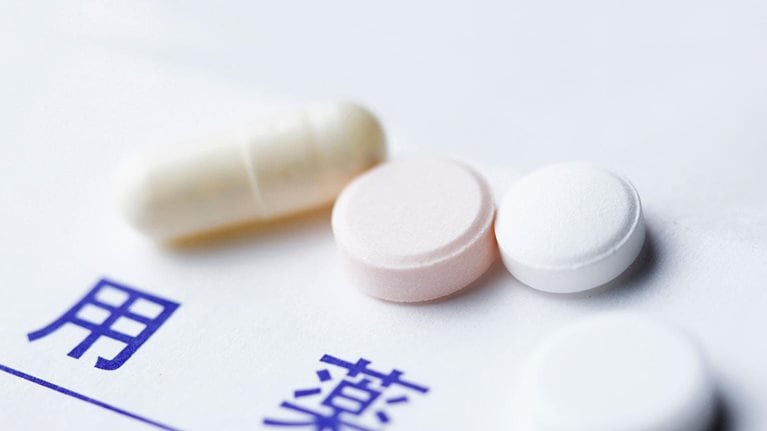History has shown that an ambitious investment strategy, particularly in M&A, can help companies grow during challenging economic times and emerge stronger than their competitors. Companies that pursued programmatic-through-cycle M&A during the last recession delivered greater returns to shareholders. Today, Japanese medical-technology (medtech) companies are in a unique position to take advantage of this dynamic and substantially improve their competitive positions. With a strong ambition to accelerate top-line performance, a need to access external innovation to complement internal technologies, and substantial dry powder, Japanese medtech players are uniquely positioned to invest in inorganic growth.
Medtech and diagnostics companies headquartered in Japan have historically been less active in M&A than their global competitors headquartered in the United States and Europe that have used partnerships and acquisitions to gain access to high-growth market segments and technology.
The volume and value of cumulative M&A activity by Japanese medtech and diagnostics companies, about ¥699 billion ($6.7 billion) in 37 transactions since 2017, have also lagged considerably behind their Japanese pharmaceutical peers (Exhibit 1).

In fact, M&A activity has rarely been a core element of the strategy for Japanese medtech companies. Sixty-two percent of players pursued organic growth, only 14 percent deployed a programmatic-M&A strategy, and none pursued large deals (Exhibit 2). Midsize and smaller Japanese players were more likely to rely exclusively on organic growth—with only one in 14 of them pursuing a programmatic strategy. That is likely because of a preference for organic development, grounded in the historic strength of R&D, over inorganic development.

As a result, and despite lackluster sales from 2014 to 2019, Japanese medtech companies have strong net-cash positions. They are also less leveraged than their global peers—publicly traded medtech and diagnostics companies headquartered in Japan have median net debt-to-adjusted-EBITDA1 ratios of less than 1.4. These strong balance sheets provide the executive teams with additional flexibility to allocate resources to inorganic growth.
“Pure play” medtech and diagnostics companies have even greater capacity for investment. They have a median net debt-to-adjusted-EBITDA ratio of 0.1, and almost half of them have more cash than debt. They have tremendous dry powder for acquisitions, joint ventures, and partnerships with technology players (Exhibit 3).

How Japanese medtech players can invest in inorganic growth
There are three things that medtech companies should do to take advantage of the current M&A opportunity.
1. Pivot the business model toward digital, including software and services
In medtech and diagnostics, there is an increasing shift toward data and analytics. Physicians and healthcare stakeholders are using them to seek deeper insights to improve clinical outcomes, and patients will increasingly take more ownership of their care and use digital tools to monitor their health.
Japanese medtech companies have an opportunity to advance their capabilities in digital and analytics. They should explore partnerships and acquisitions to improve them. A 2019 McKinsey roundtable with Japan’s industry leaders in medtech and diagnostics found that fewer than 30 percent of participants believed that they effectively generate insights from the data they collect (Exhibit 4).

Meanwhile, nonmedtech players are entering the market. JSR Corporation, a traditional chemicals company, has used a series of acquisitions to shift its strategy toward life sciences and has created a digital health lab. In 2017, it acquired LEXI, a medical 3-D-software company, to integrate LEXI’s 3-D software into its 3-D-printing and materials technologies. In addition, leading Japanese telecommunications players have launched initiatives to offer digital health services through apps and wearable technologies.
Some Japanese companies are responding. In 2019, Japanese medtech and diagnostics companies acquired four targets with software tools, advanced analytics, and diagnostic-software offerings. While not a large number, this deal activity in digital exceeds that of the 2016–18 period.
2. Build a value-creation plan to direct investments in new technologies and capabilities
With the hundreds of healthcare start-ups in Japan, how does an incumbent begin to build capabilities through investments? Acquisitions should be shaped by a systematic value-creation plan that identifies synergies with existing businesses and the resulting value pools.
For example, a compelling strategy for a Japanese medtech company could be to acquire or license digital or analytics offerings. In digital diagnostics, some life-sciences companies are partnering with start-ups to offer innovative solutions to customers in their core technological domains (for example, medical-imaging companies investing in start-ups with artificial-intelligence-based disease-detection technology). In digital therapeutics, Japanese pharma companies are licensing technology that is already in an advanced stage of development from foreign companies. There may also be opportunities for both licensing and acquisition deals with other Japanese companies, as demonstrated by CureApp’s authorization for the manufacture and sale of Asia’s first nicotine-dependence digital-therapeutics app.
3. Strengthen presence in the United States and other critical overseas geographies
While many Japanese medtech players acknowledge to investors the importance of improving their performance overseas, a significant part of their M&A activity is still focused domestically, with almost half of the deal value of all transactions from 2014 to 2020 involving a target based in Japan. And while many try to increase their exposure in the United States and in other international markets, they struggle with how to grow organically from a low-market share.
Inorganic growth offers solutions; for instance, Japanese medtech companies might create partnerships with existing players to share sales-force costs or acquire strong players in certain categories to establish a presence. An example would be partnering with local artificial-intelligence companies that are able to generate insights from medtech companies’ data and leveraging that partnership to expand in the market.
There may never be a better time than now. In Japan, leading medtech players have had years of slower growth than their global peers—with a CAGR of 2 percent, as compared with 6 percent, from 2014 to 2019. And they have lagged in digital and analytics. But with strong cash positions, they are well positioned to invest to build competitive advantage in the global and Japanese markets. The next 12 to 18 months will be critical as first movers gain an advantage in what may be a wave of transactions as the recovery unfolds.
Japanese version of the article available here.


